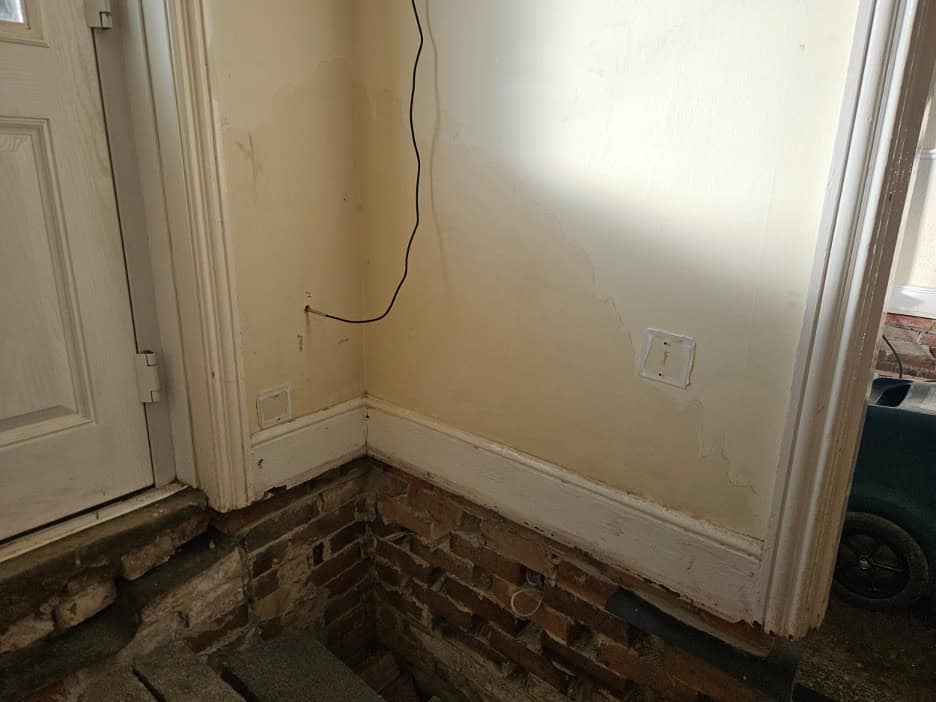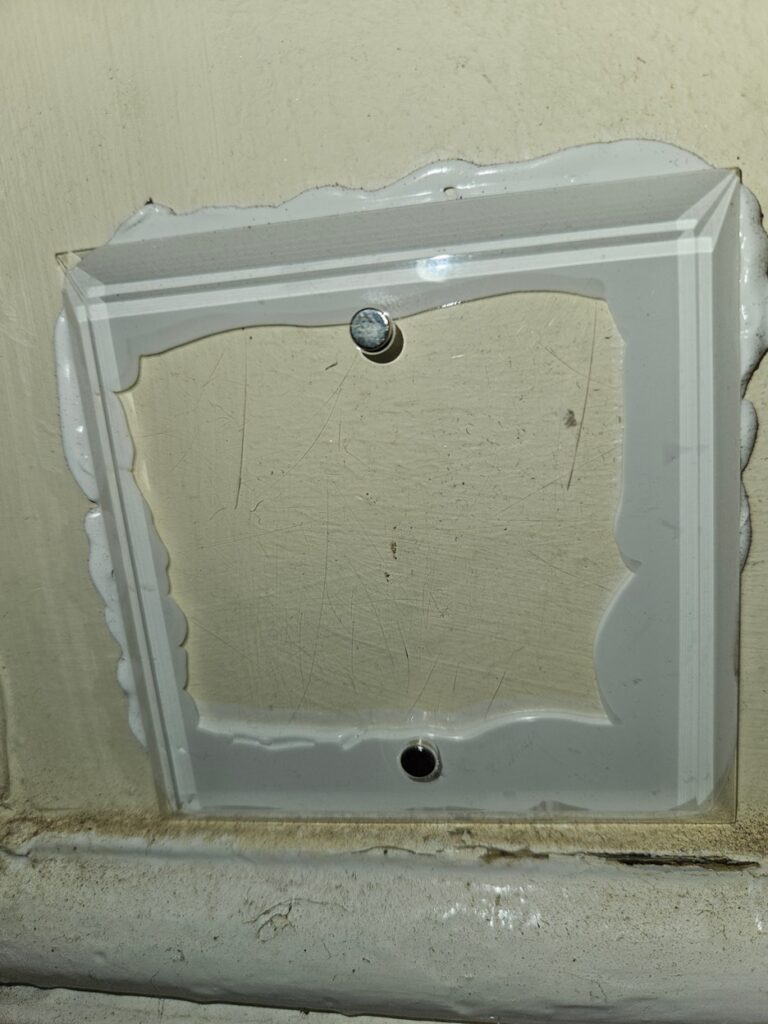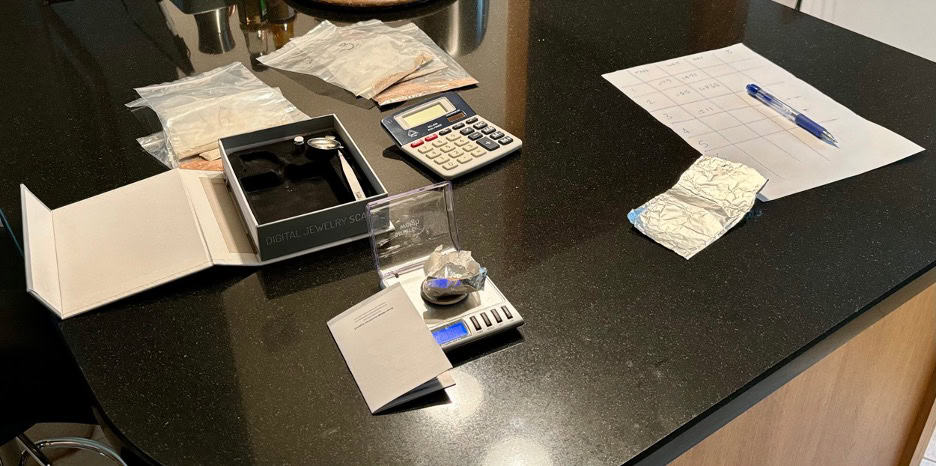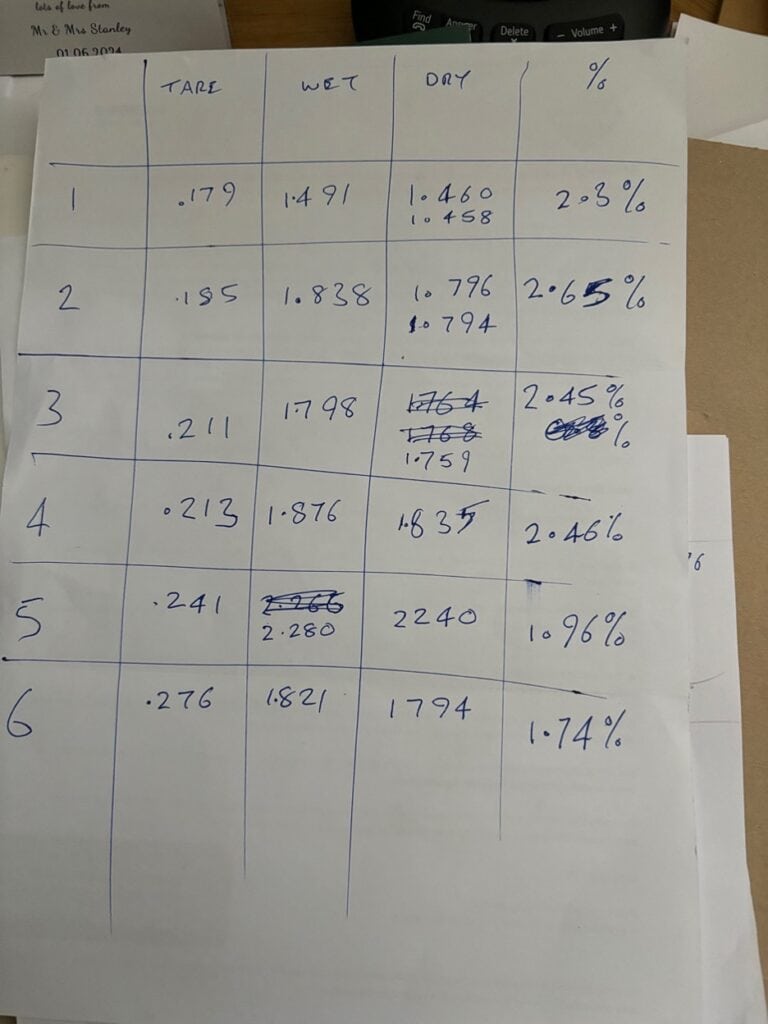DraughtBusters was recently approached about a case of suspected summer condensation.
You can read an explanation of this phenomenon here. Suffice it to say that summer condensation is both extremely rare and transient in nature.

Picture showing the state of the walls and what some might consider to be ‘rising damp’.
We talked through the problem and eventually recommended attaching some pieces of glass to the walls using a bead of sealant.
The idea of this was that if the wall was damp, dew would form on the back of the glass and if there was condensation the dew would form on the outside face of the glass, a beautifully simple test.

Nest Steps, Testing and Results
Over a period of a few weeks, there was never any evidence of moisture either behind or on the surface of the glass, yet the wall appeared to be wet.
Further, we suggested drilling a series of holes in the walls, collecting the dust on a sheet of paper and immediately sealing those samples in numbered ziplock polythene pouches, before sending them to us for analysis.
We weighed the samples as sent, dried them individually in an oven at 120C for 10 minutes, re-weighed the first one having tried to further dry it in the oven for an additional 3 mins to check it had indeed fully dried out, which it had.

From the weighing’s, we were able to calculate the percentage moisture content of each sample. We did this blind, not knowing where the sample had come from as they were only identified as sample 1, 2, 3 etc. Any with moisture content above four percent would worry us.
All the results, shown below were well below this value and for an unheated and uninhabited building are about as dry as we would expect.

Our conclusion was, that the plaster on the walls had become hygroscopic, this meant that it was able to draw moisture out of the atmosphere and to make the wall look damp.
This has got us wondering how many hundreds of thousands of homes have had damp proof courses injected when the walls weren’t damp.
This is the first instance that we have been involved with where we can prove that the walls were not damp. Previously we have been able to avert the installation of a chemical DPC (Draught Proof Course), following surveys using ‘damp meters’ by damp proofing companies that suggested that a new damp course was needed.
By doing the above tests and proving the walls in question were dry we saved the person involved £8000 for DPC and re-plastering. Instead, they spent £120 on plaster repairs.
